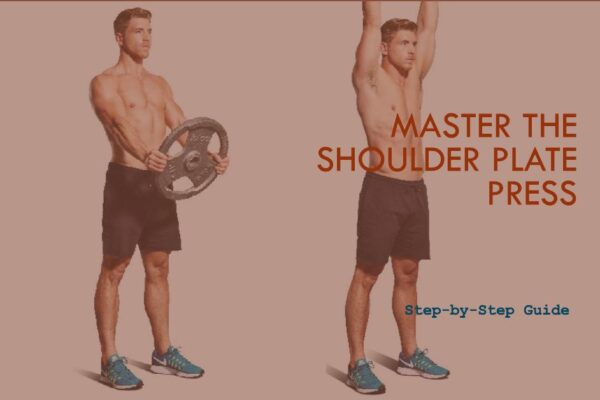When performing bench press exercises, many individuals experience arm shaking, which can be attributed to various factors such as muscular fatigue, tremors, and improper lifting techniques. The phenomenon of arms shaking during bench presses raises concerns related to muscle engagement, joint stability, and the impact of heavy lifting on the body. Understanding the underlying reasons for this occurrence is crucial for optimizing workout performance and ensuring safety during strength training.
Arm Shaking During Bench Press
- Explaining the Phenomenon: Arm shaking during the bench press is a common occurrence that can be attributed to various factors such as muscular fatigue, tremors, and improper lifting techniques.
- Significance of Addressing the Issue: Addressing arm shaking during bench press is crucial for improving workout performance and ensuring safety. Understanding the underlying reasons for this occurrence is essential for optimizing strength training and minimizing the risk of injury.

Reasons for Arm Shaking During Bench Press
- Muscle Weakness: Arm shaking during bench press can be caused by muscle weakness, particularly in the triceps or front deltoid muscles, leading to instability during the exercise.
- Muscular Fatigue: Shaking in the bench press is often a sign of muscular fatigue, which can result from various factors such as training close to one’s limits or inadequate recovery. Muscular fatigue contributes to tremors and instability during the exercise.
- Weak Shoulders or Stabilizers: Weakness in the shoulders or humeral stabilizers can also lead to arm shaking during the bench press, indicating a need for targeted strengthening of these areas for improved stability.
- Physiological Tremor: Physiological wrist tremors are observed during bench press exercises, with a decline in tremor intensity as muscle activity increases, indicating the role of muscle engagement in minimizing shaking.
- Joint and Tendon Adaptation: Arm shaking may occur due to the lack of adaptation of joints, tendons, and the spine to heavy lifting, emphasizing the importance of gradual progression and proper form to reduce instability during the bench press.
- Sign of Muscular Fatigue: The shaking of arms during bench press is often regarded as a sign of temporary muscular fatigue, indicating that the motor units responsible for muscle contraction are reaching their limits. This phenomenon is a common occurrence during high-intensity workouts.
- Connection to Muscle Fibers and Fatigue: The nature of arm shaking in bench press is linked to the friction of muscle fibers or tears within the muscles due to exertion. As certain muscle fibers fatigue faster than others during the exercise, this can result in visible tremors, reflecting the body’s response to intense physical strain.
- Contribution of Weak Forearms: Weakness in the forearm muscles can contribute to arm shaking during the bench press, as these muscles play a crucial role in stabilizing the barbell and maintaining control throughout the movement. Strengthening the forearms can improve stability during the exercise.
- Role of Lats, Upper Back, Joints, and Tendons: The stability of the bench press is not solely reliant on the chest and arms; the lats, upper back, as well as the health of the joints and tendons, are equally critical. Weakness in these areas can lead to compromised stability during the exercise, potentially contributing to arm shaking. Proper strengthening and conditioning of these muscle groups and structures are essential for maintaining stability.
Solutions to Reduce Arm Shaking During Bench Press
- Proper Warm-Up: Engage in a comprehensive warm-up routine that targets the muscles and joints involved in the bench press. This can help prepare the body for the exercise, reduce the risk of shaking, and improve overall performance.
- Focus on Forearm Strength: Incorporate specific exercises to strengthen the forearm muscles, such as wrist curls, reverse wrist curls, and gripping exercises. Improved forearm strength can enhance stability and control during the bench press, reducing the likelihood of arm shaking.
- Enhance Upper Body Stability: Emphasize training for the lats, upper back, and shoulder stabilizers to bolster overall upper body stability. This can be achieved through exercises like lat pulldowns, rows, and shoulder stability drills, reducing the potential for arm shaking during the bench press.
- Form and Technique: Prioritize proper form and technique during the bench press, including maintaining a tight grip on the bar, keeping the elbows tucked, and ensuring stable shoulder positioning. A focus on form can mitigate arm shaking and improve the effectiveness of the exercise.
- Incremental Progression: Gradually increase the weight used in bench press exercises to facilitate adaptation and strength development. Incremental progression allows the body to acclimate to heavier loads, potentially reducing arm shaking as strength improves.
- Rest and Recovery: Ensure adequate rest and recovery between bench press sessions to allow for muscular recuperation. Proper recovery is crucial for minimizing muscle fatigue, which can contribute to arm shaking during the exercise.
Can Muscle Shaking During Bench Press Be Beneficial?
Muscle shaking during the bench press can be seen as beneficial due to its association with muscular fatigue and potential muscle development. Here are the key points:
- Muscle shaking during the bench press can be beneficial as it indicates muscular fatigue, which is a sign of pushing the muscles to their limits and potentially stimulating growth and strength development.
- The shaking is attributed to the friction of muscle fibers or tears within the muscles due to the exertion, signifying the nature of getting stronger. It reflects the body’s activation of more muscle fibers to cope with fatigue, potentially leading to improved muscle engagement and development.
- While arm shaking may indicate weakness in certain muscle groups, such as the forearms, it can serve as a valuable feedback mechanism to identify areas for targeted strength training, ultimately contributing to overall muscle stability and control during the bench press.
Fuel Your Muscles Properly Before Bench Pressing
When fueling your muscles before bench pressing, it’s important to consider the nutritional and preparatory aspects to optimize performance. Here are some insights from various sources:
- Pre-Workout Nutrition: Eating a carb-heavy meal the night before training, along with some protein and healthy fat, can help provide sustained energy for the upcoming workout. On the day of the workout, consuming most of your carbs shortly before the workout and during it can further support energy levels.
- Exercise Preparation: Engaging in warm-up exercises like pull-ups before the bench press can help warm up the back, shoulders, and arms, providing more accessible power, flexibility, and better form. This can potentially enhance overall performance during the bench press.
- Muscle Activation: Paying attention to shoulder muscles, specifically the deltoids and rotator cuff, is crucial as they can either promote or limit bench press strength. Starting with exercises that activate these muscle groups can contribute to improved bench press performance.
Incorporating these nutritional and preparatory strategies can help properly fuel your muscles before engaging in bench pressing, potentially contributing to enhanced performance and reduced fatigue.
When to Seek Professional Help
A. Persistent Shaking Despite Corrective Measures
If you’re consistently experiencing shaky arms during bench press despite implementing corrective measures, consider seeking guidance from a fitness trainer or physical therapist.
B. Pain or Discomfort During Bench Press
Persistent pain or discomfort during bench press sessions could indicate underlying issues that require professional assessment and treatment.
C. Consulting with a Fitness Trainer or Physical Therapist
A qualified fitness trainer or physical therapist can assess your bench press technique, identify any form issues or muscle imbalances, and provide personalized recommendations to address shaky arms effectively.
Sample Routine to Improve Your Bench Press Performance
Here’s a 4-week plan designed to enhance your bench press strength by focusing on proper technique, stabilizer muscle exercises, and gradual strength progression, all aimed at minimizing arm shaking.
Day 1:
- Warm-up: 5-10 minutes of light cardio (such as brisk walking or cycling)
- Bench Press: 4 sets of 8-10 reps
- Incline Dumbbell Press: 3 sets of 10-12 reps
- Chest Flyes: 3 sets of 12-15 reps
- Tricep Dips: 3 sets to failure
- Push-ups: 2 sets to failure
Day 2:
- Rest or engage in light cardio/stretching
Day 3:
- Warm-up: 5-10 minutes of light cardio
- Close Grip Bench Press: 4 sets of 8-10 reps
- Dumbbell Shoulder Press: 3 sets of 10-12 reps
- Tricep Rope Pushdowns: 3 sets of 12-15 reps
- Overhead Tricep Extension: 3 sets of 10-12 reps
- Plank: 3 sets of 30-60 seconds
Day 4:
- Rest or engage in light cardio/stretching
Day 5:
- Warm-up: 5-10 minutes of light cardio
- Pause Bench Press: 4 sets of 6-8 reps
- Incline Dumbbell Flyes: 3 sets of 10-12 reps
- Diamond Push-ups: 3 sets to failure
- Tricep Kickbacks: 3 sets of 12-15 reps
- Hanging Leg Raises: 3 sets of 10-12 reps
Day 6-7:
- Rest or engage in light cardio/stretching
Additionally, ensure adequate nutrition and recovery, including a focus on protein consumption for muscle repair and growth, and ample rest between workout sessions. This routine aims to target various muscle groups involved in bench pressing while also addressing tricep and shoulder strength, all of which can contribute to overall bench press improvement.
Frequent Question Answers
| Question | Answer |
|---|---|
| How do you fix uneven lats? | Fixing uneven lats involves incorporating unilateral exercises, emphasizing proper form, and seeking guidance from fitness professionals for personalized strategies. |
| Why does one of my lats look bigger than the other? | Asymmetry in lat size can result from genetic factors, dominant hand/arm usage, and specific exercise routines, contributing to unequal muscle development. |
| Why is my non-dominant side bigger? | The non-dominant side may appear bigger due to compensation during exercises, leading to disproportionate muscle engagement and development. |
| Are big lats good? | Big lats can contribute to overall strength, stability, and improved performance in various physical activities, making them desirable for many individuals. |
| Why do fighters have big lats? | Fighters develop big lats to enhance punching power, stabilize the upper body during combat movements, and support overall functional strength and conditioning. |
| Do fighters have big lats? | Yes, fighters often develop big lats through specialized training designed to enhance upper body strength, power, and overall physical performance. |
Conclusion
In conclusion, the arm shaking experienced during the bench press can be attributed to muscular fatigue, indicating an opportunity for growth and strength development. It serves as a valuable feedback mechanism, highlighting areas for targeted training and technique improvement. By understanding the underlying factors contributing to arm shaking and implementing the outlined strategies, individuals can work towards a more stable and effective bench press experience.
Sources
- Reddit: Right Lat bigger than left, I know the cause but not the …
- Quora: How to fix my uneven lats
- T-Nation Forums: One Lat Bigger Than the Other, What to Do?
- Ironman Magazine: My right lat is growing much faster than my left. What…
- Bodybuilding.com Forums: Thread: Right lat is A LOT bigger than left






Leave a Reply